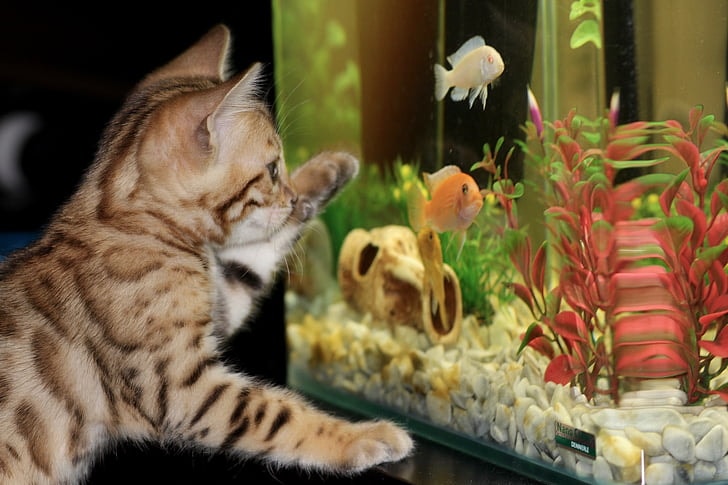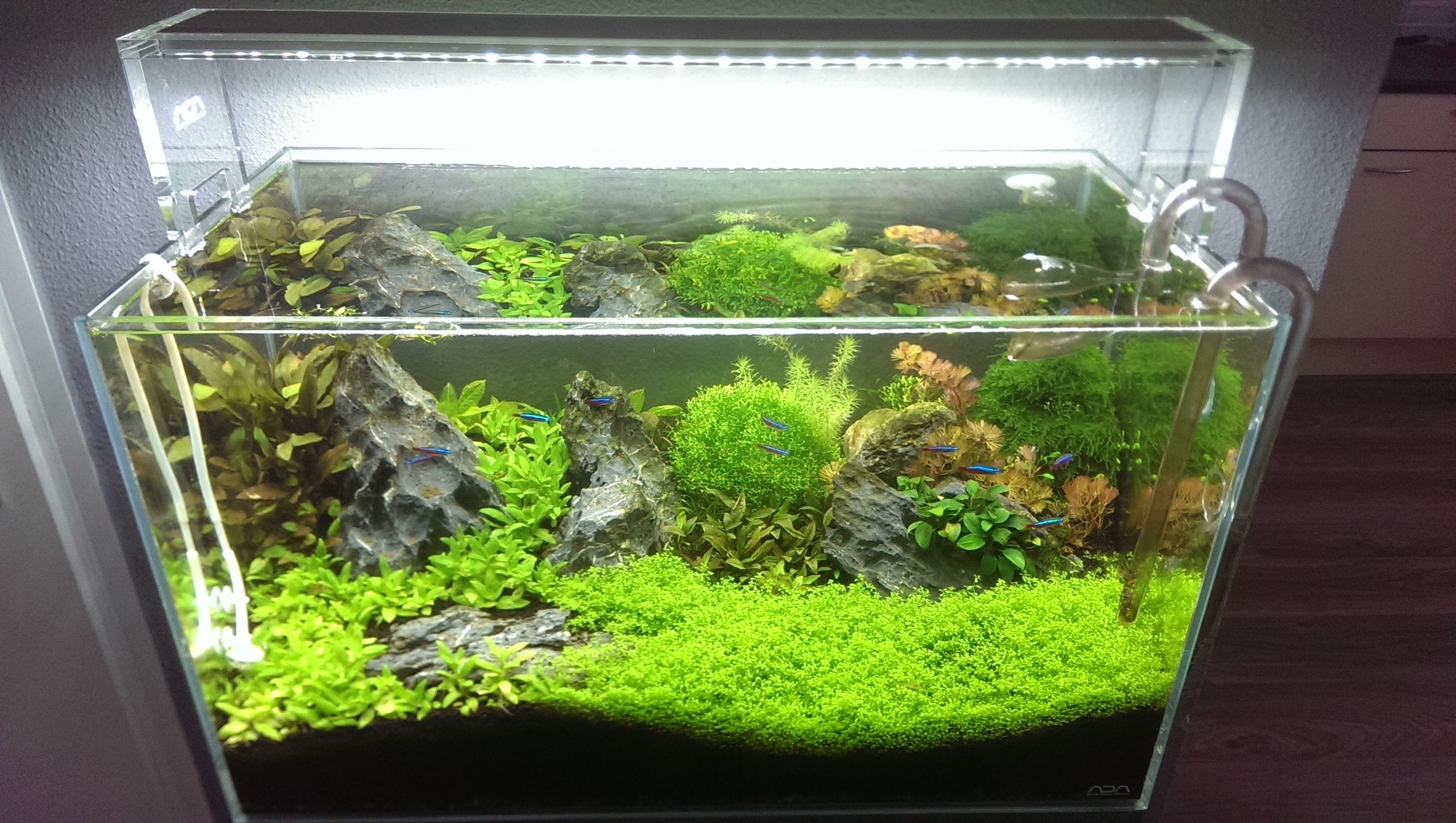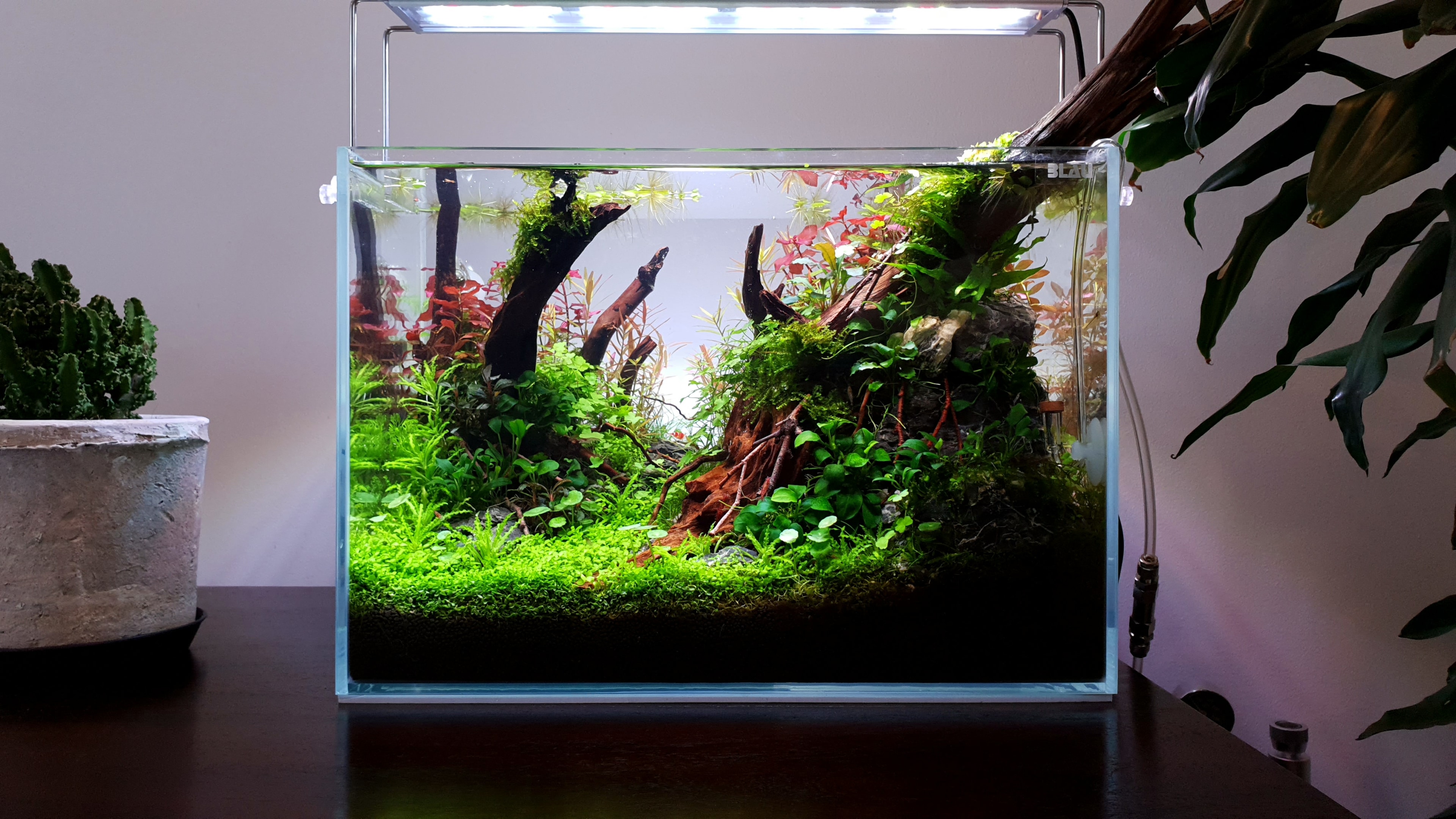Acrylic vs. glass aquarium - which is the best option for me?
An acrylic aquarium is a popular choice among hobbyists due to its lightweight and durable properties. Acrylic is known for its flexibility, making it resistant to shattering or cracking under impact. This quality makes it particularly appealing for households with children or pets, as there’s a lower risk of breakage. Additionally, acrylic aquariums can be designed in various shapes and sizes, allowing for creative setups that fit unique spaces.
However, while acrylic tanks are versatile, they do have some drawbacks. They are more prone to scratches compared to glass, requiring extra care during cleaning. Despite this, many aquarists appreciate the clarity and safety of acrylic aquariums, especially for larger installations. With proper maintenance, an acrylic aquarium can provide a stunning centrepiece for any home or office for many years.

The Durability of the Glass Aquarium
A glass aquarium has been the traditional choice for aquarists for many years, primarily due to its durability and scratch resistance. Glass is a harder material, which means it is less likely to suffer from scratches during cleaning. This hardness provides an advantage, especially for those who frequently clean their tanks, as regular tools can be used without worry. Furthermore, the weight of glass tanks can contribute to their stability, making them less susceptible to being knocked over.
However, the durability of glass has its limitations. While it resists scratches, glass can shatter or crack if subjected to significant impact. This brittleness may be a concern in environments with high activity, such as homes with pets or children. Despite this, glass aquariums maintain their clarity and aesthetic appeal over time, making them a long-lasting investment for serious aquarists.
Acrylic vs Glass Aquarium: Key Differences
When considering an acrylic vs glass aquarium, it’s essential to examine their distinct characteristics. Acrylic is much lighter and often provides a more seamless appearance, allowing for innovative designs. However, acrylic can become cloudy over time and may require more upkeep to maintain its clarity. In contrast, glass maintains its transparency longer, making it visually appealing for those who prioritise long-term clarity.
Price is another factor in the acrylic versus glass debate. Acrylic tanks tend to be more expensive due to their manufacturing process and versatility in design. Conversely, glass tanks are typically more affordable and widely available, providing a practical option for many aquarium enthusiasts. Ultimately, choosing between these two materials depends on individual preferences and specific needs.

Weight and Portability of Acrylic and Glass Tanks
When it comes to weight and portability, the differences between an acrylic tank and a glass tank become especially apparent. Acrylic tanks are significantly lighter, often weighing about half as much as a similarly sized glass tank. This makes acrylic much easier to transport, install, and move when necessary. For larger tanks, this reduced weight is a substantial advantage, especially when trying to maneuver through tight spaces or position the tank on a less sturdy surface.
In contrast, a glass tank is heavier and can be more cumbersome to set up or move. While the added weight provides greater stability once in place, it can be a challenge if you plan to relocate the aquarium in the future. For those who prefer the durability of glass but need a large tank, it’s essential to consider whether the weight will be an issue during installation. In this way, deciding between an acrylic or glass aquarium comes down to whether ease of handling or stability is more important to you.
Optical Clarity and Appearance
When it comes to optical clarity, glass fish tanks often take the lead over acrylic. Most glass aquariums provide an exceptional level of clarity that can showcase the vibrant colors of fish and aquarium plants. This is essential for hobbyists who want to create a visually stunning environment, as clear viewing enhances the overall aesthetic appeal of the aquarium. While acrylic offers decent clarity initially, it tends to become cloudy or yellow over time, especially when exposed to UV light.
In contrast, acrylic can scratch more easily than glass, which may affect its optical quality. Over time, acrylic scratches can detract from the appearance of the aquarium. Thus, while both materials can look beautiful when new, the long-term clarity of glass fish tanks often makes them the preferred choice for those prioritising visual impact. Ultimately, if clarity is paramount, many aquarists opt for most glass aquariums as they provide an enduring clear view of the underwater world.

Impact of UV Light on Aquarium Material
The effect of UV light is another critical consideration when choosing between acrylic and glass. Acrylic is more prone to yellowing and degradation when exposed to UV light over time. This means that while acrylic can start off clear and vibrant, continuous exposure to sunlight or artificial lighting can cause it to develop a yellow tint, which diminishes its aesthetic value. This yellowing not only impacts the appearance but can also affect the overall health of the aquarium ecosystem.
In contrast, glass fish tanks are far less susceptible to the damaging effects of UV light. Most glass aquariums maintain their clarity and color integrity for much longer periods. This durability is one reason why many aquarists prefer glass over plastic or acrylic materials. Additionally, the long-lasting quality of glass means that hobbyists won’t need to replace or maintain their tanks as frequently, saving both time and money in the long run.

Durability and Resistance to Damage
When considering durability, glass fish tanks and acrylic tanks each have their strengths and weaknesses. Most glass aquariums are known for their rigidity and resistance to scratching, making them less prone to wear over time. While glass can shatter under impact, it typically withstands scratches much better than acrylic. This durability is a crucial factor for many hobbyists, as it ensures that their investment remains visually appealing and functional over the years.
On the other hand, acrylic tanks are lighter and less likely to shatter upon impact, which makes them safer in high-traffic areas. However, acrylic scratches easily, and those scratches can become quite noticeable, detracting from the overall appearance. For those who are mindful of their aquarium's longevity, the durability of glass in resisting scratching makes it a compelling choice, especially for tanks featuring delicate fish and intricate decorations.
Cost Considerations: Acrylic vs Glass
When it comes to cost, the initial investment can vary significantly between acrylic and glass fish tanks. Generally, acrylic tanks tend to be cheaper in terms of manufacturing costs and can be produced in different shapes and sizes. However, the long-term expenses associated with maintaining an acrylic aquarium may outweigh the initial savings. As acrylic tends to scratch more easily and may require more frequent replacement or polishing, the overall cost can add up over time.
Conversely, most glass aquariums might have a higher upfront cost, but their durability often makes them a more economical option in the long run. The resistance of glass to scratches means less frequent need for replacements, and their longevity can provide peace of mind for aquarists. Additionally, glass does not yellow over time, ensuring that the investment remains visually pleasing for years, making it a cost-effective choice for serious fish hobbyists.
Maintenance: Cleaning and Care
Maintenance is an essential factor for anyone considering an aquarium, whether it's a glass fish tank or an acrylic option. Acrylic tanks require specific cleaning tools to avoid damaging their surface, as scratching can occur easily if abrasive materials are used. It’s crucial to use non-abrasive cleaners and soft cloths to maintain the clarity and appearance of the tank. Additionally, while acrylic can be cleaned with a gentle soap solution, it’s advisable to avoid exposing it to harsh chemicals that could compromise the material’s integrity.
On the other hand, maintaining most glass aquariums can be simpler, as glass is less susceptible to scratching. Regular cleaning with standard aquarium-safe products is usually sufficient to keep a glass tank in good condition. However, care must still be taken to avoid dropping heavy objects against the tank. Overall, while both types of aquariums require maintenance, glass fish tanks tend to be easier to care for in terms of avoiding scratches and ensuring lasting clarity.
Aesthetics and Visual Appeal
The aesthetics of an aquarium can significantly influence the choice between acrylic and glass. Glass fish tanks often provide a more traditional and classic look that many aquarists prefer. The transparency of glass allows for a clear view of the aquatic life inside, enhancing the visual appeal of the tank. The light refracted through the glass also contributes to a vibrant display of colors from the fish and aquarium plants, creating a captivating focal point in any room.
Conversely, acrylic tanks can offer unique designs and different shapes that are often not feasible with glass. This versatility allows for creative configurations that can fit various spaces, appealing to those who want a more modern or customized look. However, the potential for yellowing over time may affect the long-term aesthetics of acrylic. Ultimately, the choice between glass and acrylic comes down to personal preference, as both materials can create stunning displays when paired with the right fish and plants.
Environmental Impact and Sustainability
When considering the environmental impact of acrylic and glass, both materials have different implications for sustainability. Glass is made from natural materials like sand, soda ash, and limestone, which are abundant and can be recycled easily. This recyclability gives glass a more favorable environmental profile, particularly in an era where sustainability is increasingly important to consumers. Additionally, since most glass aquariums have a longer lifespan than acrylic, they may contribute less to waste over time.
On the other hand, acrylic production involves petroleum-based plastics, which raises concerns regarding their environmental footprint. The manufacturing process can involve significant energy consumption and carbon emissions. However, acrylic’s lightweight nature often requires less energy for transportation, which may mitigate some of its environmental impact. As fish hobbyists become more environmentally conscious, the choice between glass fish tanks and acrylic may increasingly depend on personal values regarding sustainability and environmental stewardship.
CO2 Injection and Plant Health
The choice between acrylic and glass aquariums can also affect how well one can manage carbon dioxide (CO2) levels for aquarium plants. Proper CO2 injection is vital for promoting healthy plant growth and preventing issues such as hair algae in both types of tanks. While both materials can support CO2 systems, the impact of light penetration may vary. Glass, known for its superior optical clarity, allows for better light transmission, which is essential for photosynthesis in aquatic plants.
In contrast, acrylic tanks, while lightweight and versatile, may diffuse light slightly more than glass. This could potentially affect the efficiency of CO2 usage if the plants do not receive adequate light. Hobbyists often find that achieving a balanced CO2 level helps create a thriving environment for their fish and plants, regardless of the tank material. Therefore, understanding how CO2 interacts with both acrylic and glass aquariums is key for anyone looking to create a lush, vibrant underwater landscape.
Choosing the Right Aquarium for Your Needs
Deciding between an acrylic or glass fish tank ultimately comes down to individual needs and preferences. For those who prioritize aesthetics and long-term clarity, most glass aquariums are likely the best choice. They provide excellent optical clarity, resist scratching better than acrylic, and maintain their visual appeal over time. However, their heavier weight and potential for shattering can be drawbacks, especially for those in high-traffic areas or with children and pets.
Conversely, if portability and design flexibility are more important, an acrylic tank could be the ideal solution. Acrylic offers a wider range of shapes and sizes, making it easier to fit into various spaces. Additionally, the lightweight nature of acrylic makes installation and relocation simpler. Ultimately, aquarists should consider their specific circumstances, such as the environment where the aquarium will be placed and how much maintenance they are willing to perform, when making this choice.
Conclusion: Making an Informed Decision
In conclusion, both acrylic and glass have their unique advantages and disadvantages that cater to different aquarist needs. Glass fish tanks shine in terms of durability, optical clarity, and aesthetic longevity, while acrylic tanks offer versatility in shape and lighter weight. As you contemplate your options, think about factors such as maintenance requirements, environmental impact, and the type of aquatic life you wish to keep.
The decision between acrylic or glass aquariums should align with your specific goals as a hobbyist. Whether you choose acrylic for its modern appeal or glass for its traditional elegance, making an informed choice will help ensure that your aquarium remains a stunning centerpiece in your home for years to come. Ultimately, understanding these materials' properties will empower you to create a thriving underwater ecosystem that you can enjoy and share with others.
Meet our bestseller! The Pro-Elite Series Complete Aquarium CO2 System with New Inline CO2 Diffuser!






